| Big-Bore Camera Adapter |
|
| As time went by, my collection of eyepieces evolved toward the long and fat side of things. I needed an adapter for eyepiece projection that would let me use the eyepieces I had, and wouldn't flex under my heaviest loads. After looking around and not finding what I wanted, I decided to spend some time at the lathe: | |
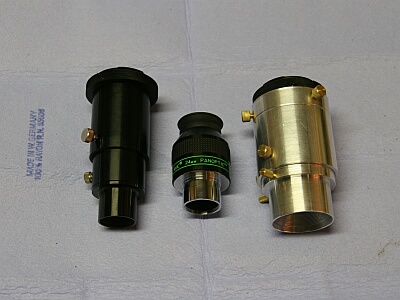 The old, the reason, and the new |
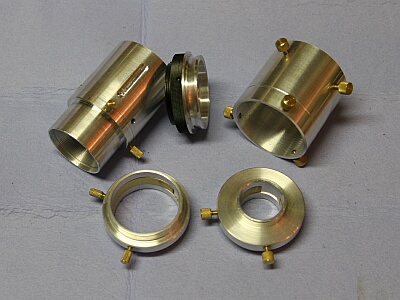 All the parts - ready to go |
| This adapter will accommodate eyepieces up to 2" in diameter, and up to 3½" long (plus the 1¼ mount section). It has quick-change adapters for 1¼, 2", and SLR cameras on the back. It's big, but at minimum length, it's shorter than the standard commercial version. Part of the reason for this is that the camera bayonet goes directly on a dovetail ring (same diameter as the T-ring) machined into the adapter's SLR mount. There are no T-Threads on the back. | |
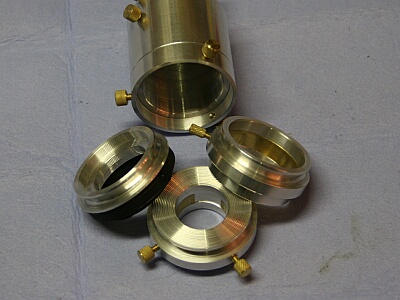 The back end - Quick-change camera mounts | 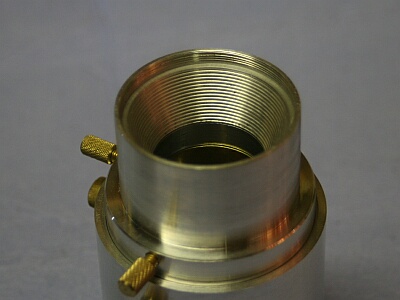 2" front end - Threaded for 2" filters Baffled cone leads to the 1¼" holder. |
|
The inner surfaces are fully baffled, all the barrel clamps have double-screw compression rings, and each group of thumbscrews is of a unique size and shape. This makes it easy to identify which screw you are about to loosen in the dark (sort of like braille). It does help. | |
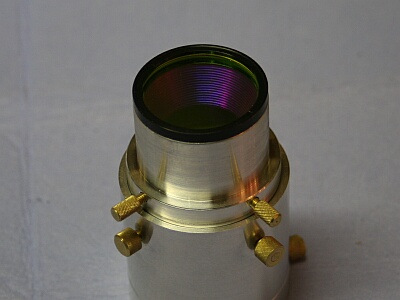 2" filter in place | 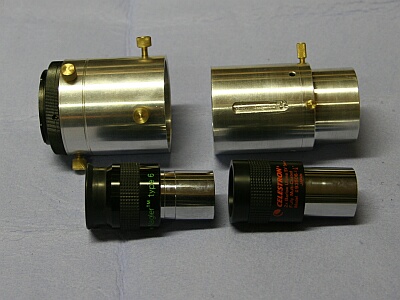 Now the Barlow can go inside |
|
With the 1¼" Barlow out of the load path for the camera, there's one less flexure point to deal with, and since all the load connections are 2", flexure finally becomes the least of my worries. | |
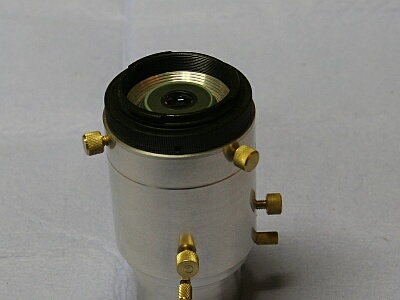 | 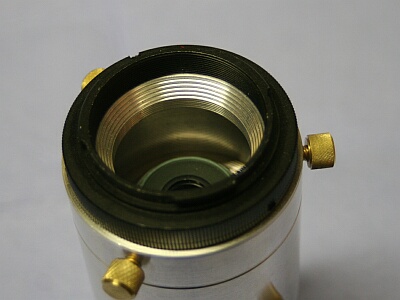 |
|
Above: The barrel has 1½" of slide travel. That's my longest eyepiece (a Star Splitter 3.9) at minimum and maximum travel. | |
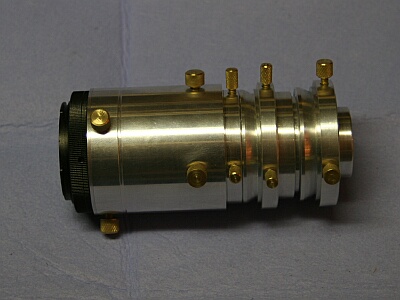 | Last, but not least All the pieces stack for storage so the mating surfaces are out of the path of most-likely-impact. Note: This page shows the adapter "in the white". It's next stop will be the metal shop for a coat of hard, black anodize. The inside then night get a flat black coating on top of that. We'll try it and see. |